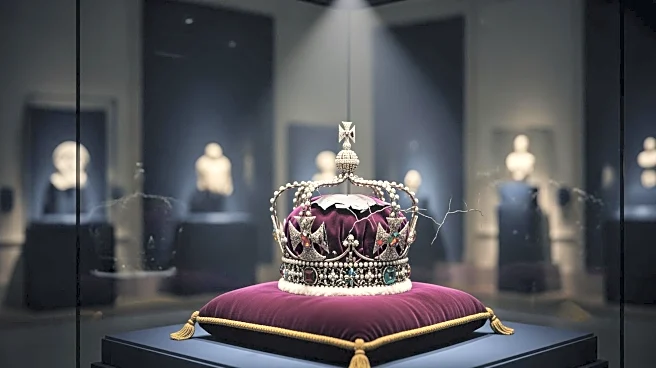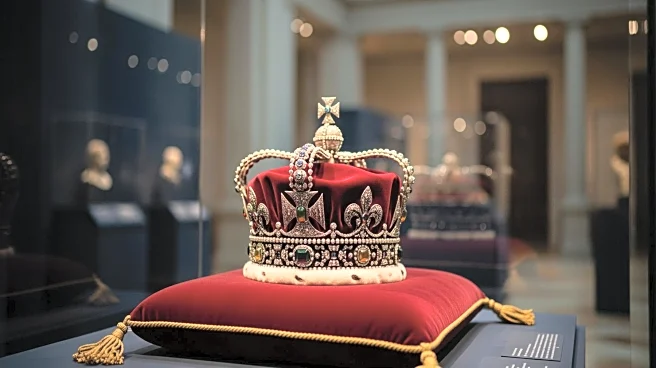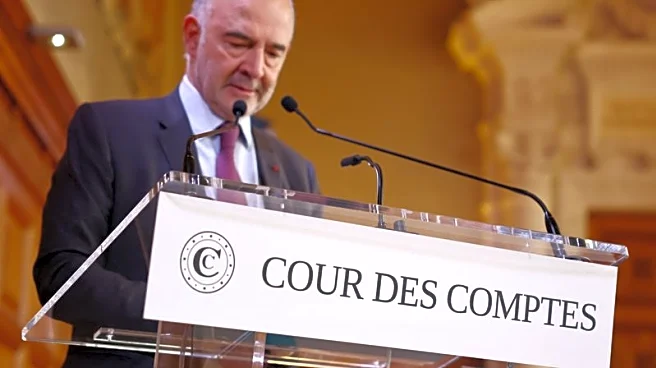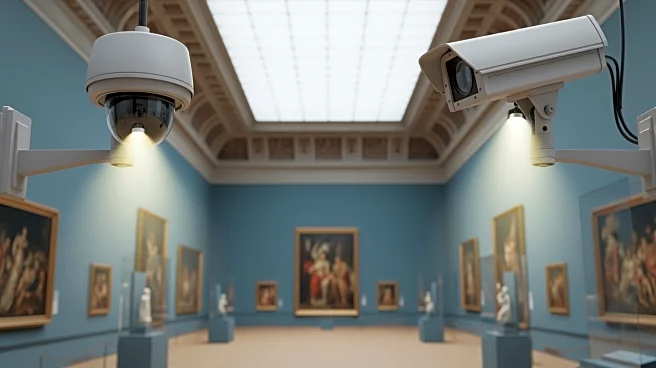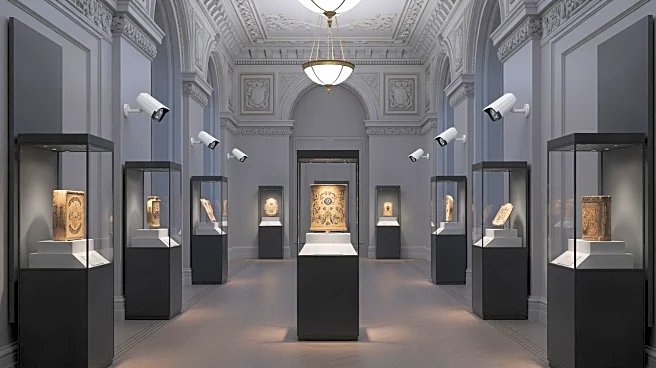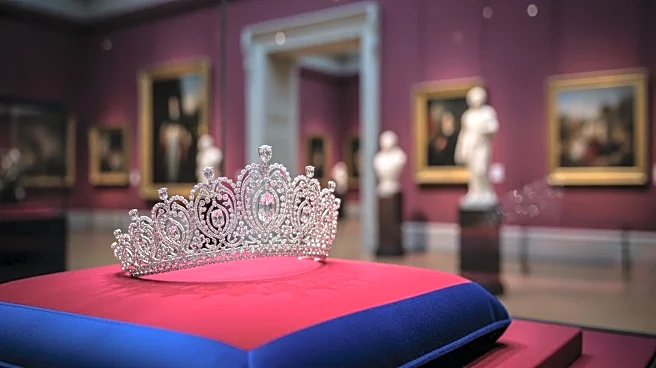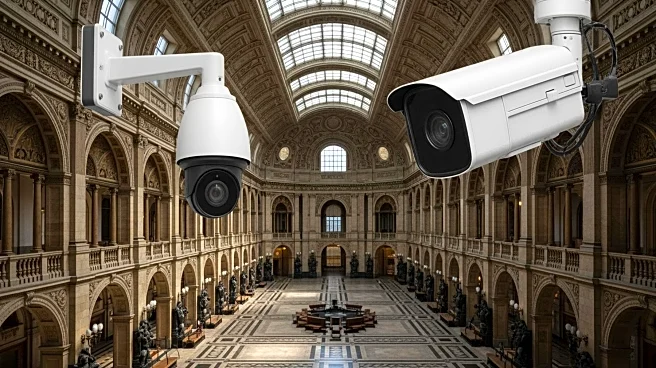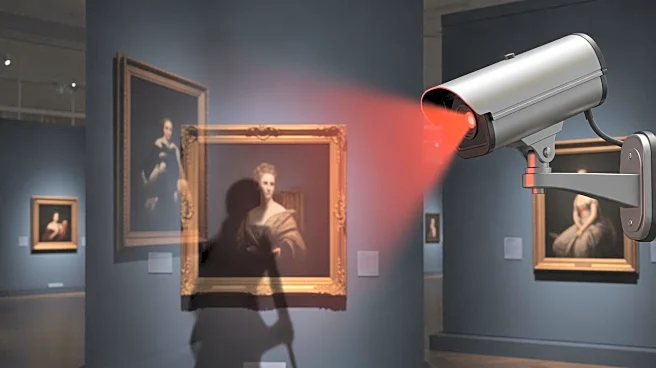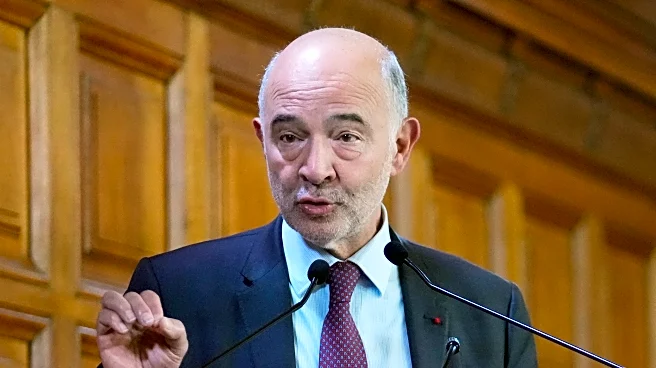What's Happening?
The Louvre Museum in Paris is set to restore the imperial crown of Empress Eugénie, which was damaged during a robbery on October 19. Thieves managed to steal eight objects from the museum, including a sapphire
diadem and necklace linked to 19th-century Queens Marie-Amélie and Hortense. The crown, adorned with over 1,300 diamonds, was found outside the museum, likely damaged during its removal from the display case. Laurence des Cars, the museum's director, announced that the restoration will be funded by patrons and supervised by a scientific committee. Des Cars had offered her resignation following the robbery, but it was declined by the culture minister. The incident has highlighted the need for modernizing the museum's security systems, a concern previously raised by France's court of auditors.
Why It's Important?
The restoration of the crown is significant as it represents a commitment to preserving cultural heritage despite security challenges. The robbery has underscored vulnerabilities in the museum's security infrastructure, prompting calls for modernization. This incident could influence public policy regarding the protection of national treasures and cultural assets. The Louvre's plan to modernize its facilities, including security enhancements, is crucial for safeguarding its collections and ensuring visitor safety. The museum's ability to attract patrons for restoration projects also reflects the importance of private support in maintaining cultural institutions.
What's Next?
The Louvre is embarking on a decade-long modernization plan, estimated to cost up to 800 million euros, aimed at improving security, infrastructure, and visitor experience. This includes creating a dedicated gallery for the Mona Lisa by 2031. The museum's director, Laurence des Cars, is advocating for these changes to address overcrowding and technical obsolescence. The recent robbery may accelerate these efforts, with increased scrutiny on security measures. Stakeholders, including government officials and cultural patrons, are likely to play a role in supporting these initiatives to prevent future incidents.
Beyond the Headlines
The robbery at the Louvre raises ethical questions about the protection of cultural heritage and the responsibilities of institutions in safeguarding historical artifacts. It also highlights the balance between accessibility and security in public museums. The incident may prompt broader discussions on the allocation of resources for cultural preservation versus visitor engagement. Long-term, this could lead to shifts in how museums prioritize their investments, potentially influencing global standards for museum security and management.
